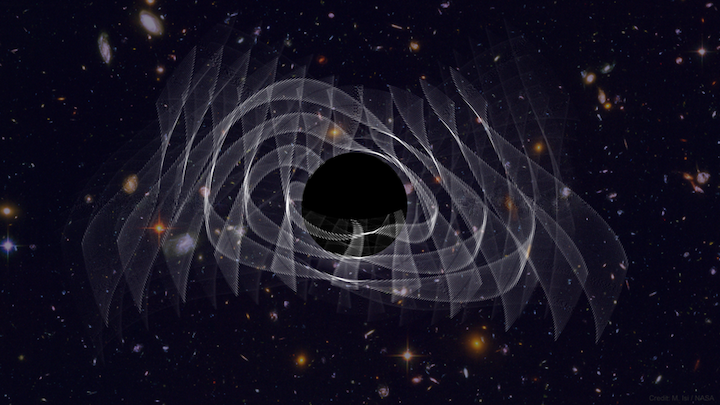13.09.2019

For the first time, astrophysicists have heard a black hole ringing like a bell. By reanalyzing the first black hole merger ever detected, the astrophysicists measured the gravitational wave ‘tones’ emitted following the event. The breakthrough comes 10 years earlier than expected and confirms that the properties of black holes are just as Einstein predicted in his theory of general relativity in 1915.
“Previously it was believed these tones were too faint to be detected, yet now we are able to,” says study co-author Will Farr. “Just like the measurement of atomic spectra in the late 1800s opened the era of stellar astrophysics and classifying and understanding stars, this is the opening of the era of black hole spectra and understanding black holes and the general relativity that sits behind them.”
Farr is an associate professor at Stony Brook University in New York and group leader for gravitational wave astronomy at the Flatiron Institute’s Center for Computational Astrophysics in New York City. He and his colleagues present their findings September 12 in Physical Review Letters.
When two black holes merge into one, the resulting supersized black hole wobbles like a struck bell. The reverberations emit gravitational waves at characteristic tones that fade away as the black hole settles. The so-called ‘no-hair theory’ states that these tones — and all other external properties of a black hole — depend only on the black hole’s mass and rotation, just as Einstein’s general relativity predicts. Some scientists, however, propose that reality is hairier and that effects like quantum mechanics play a role as well.
Scientists knew that detecting a black hole’s tones could settle the debate. But the tones were thought to be too quiet to be detected by the current-generation gravitational wave detectors LIGO and Virgo.
In the new study, the astrophysicists combined simulations of black hole mergers with a reanalysis of the first gravitational waves ever detected. Those waves came from the merger of two black holes. The analysis led to the identification of two independent tones emitted by the newly combined black hole. The pitch and decay rates of these tones lined up with Einstein’s general relativity. The no-hair theory stood triumphant.
Farr says that with new data analysis and with LIGO and Virgo continuing to observe black hole mergers, tests from the observatories will become more precise. The added precision will likely lead to additional detections of black hole tones and an improved understanding of the exotic objects.
Farr collaborated on the study with Maximiliano Isi of the Massachusetts Institute of Technology and the astrophysicists Matt Giesler, Mark Scheel and Saul Teukolsky of the California Institute of Technology.
Quelle: Simons Foundation
